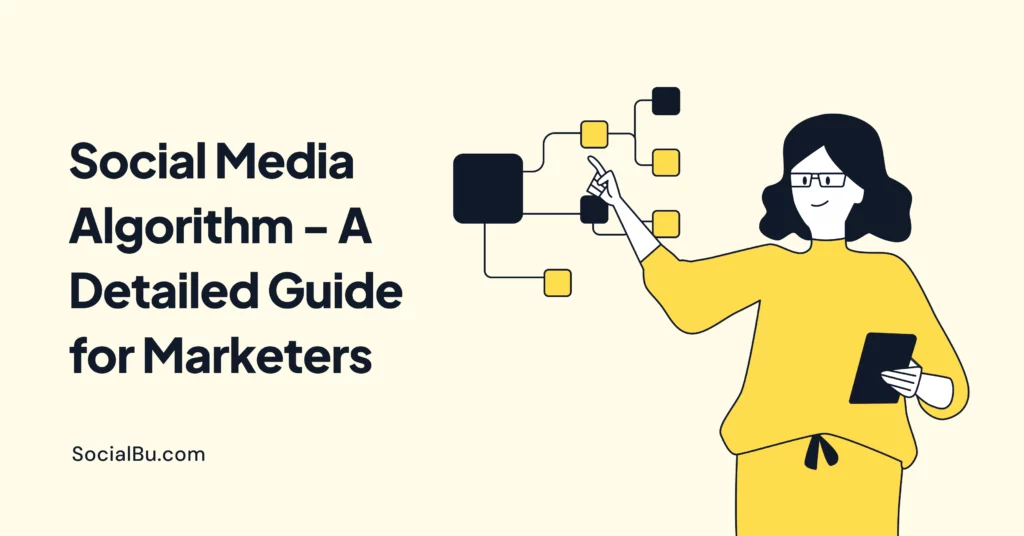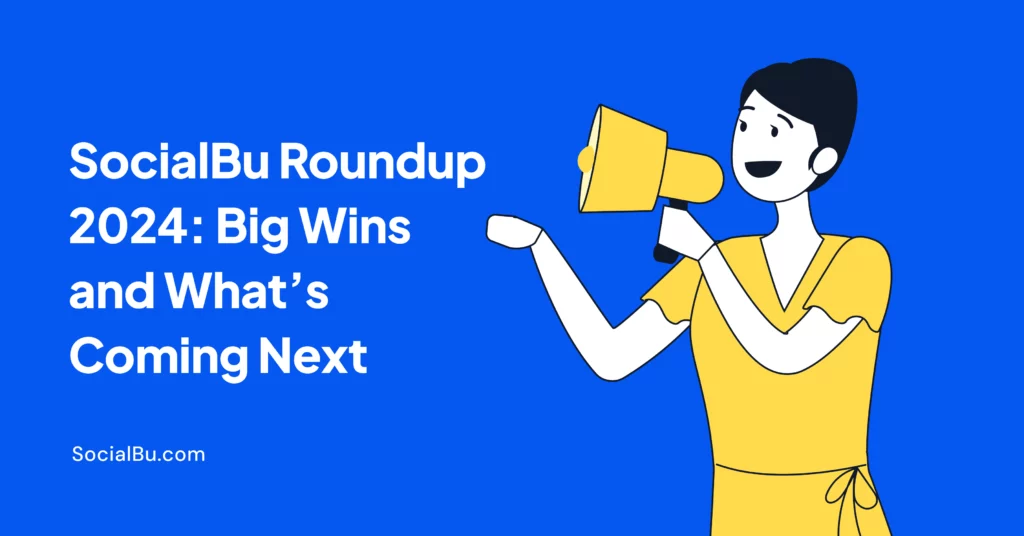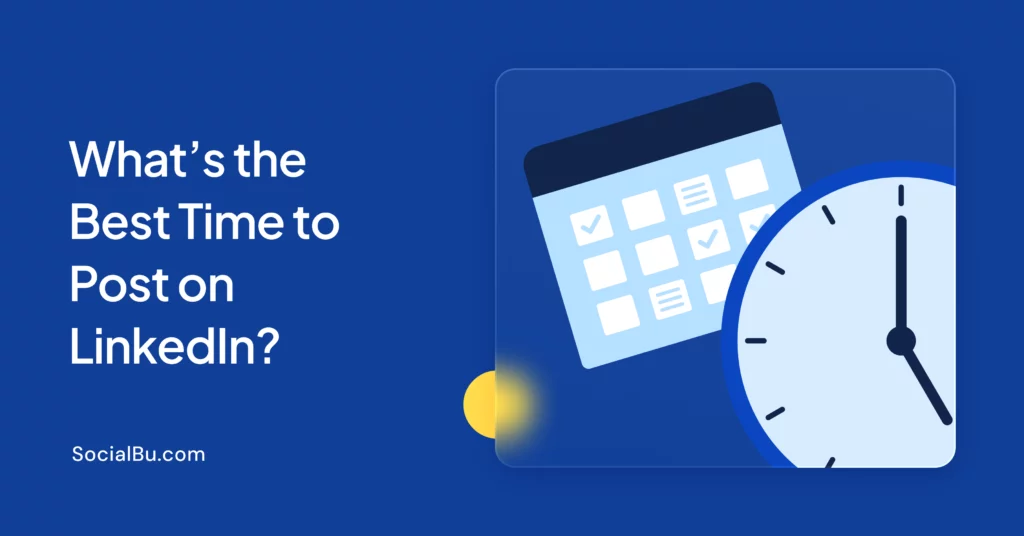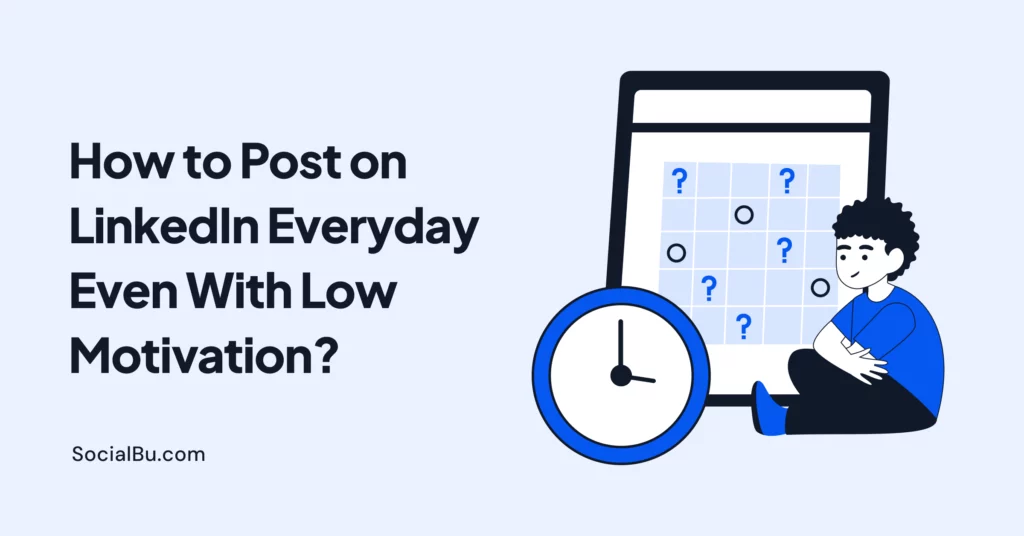The social media algorithm has long been the most unseen builder of online success. From early Facebook algorithms favoring friends’ posts to today’s AI-driven systems, social media algorithms shape content visibility and drive interaction.
Things have changed in 2025, though. Soon, social media systems will be able to guess what we want faster, smarter, and with more intuition.
This blog discusses how the 2025 social media algorithm has changed this, what other alterations are expected, and how these updates will affect social media work ethics.
You can take it as your roadmap for success in the age of AI-driven social networks.
Understand Social Media Algorithms in 2025
Social media algorithms have come a long way from simply showing posts chronologically. In 2025, they will be smarter, more intuitive, and heavily powered by AI. Understanding how these algorithms work is crucial, whether you’re a brand trying to increase visibility or a marketer aiming to boost engagement.
But what exactly is a social media algorithm? How does it affect content reach and engagement? And most importantly, how can you leverage it to your advantage? Let’s break it down.
What is a Social Media Algorithm?
A social media algorithm is a set of rules and calculations platforms use to decide what content appears on users’ feeds. Instead of showing everything in real time, algorithms prioritize content based on relevance, engagement, and user behavior.
Think of it like this: You open Instagram and immediately see posts from your closest friends, trending reels, and content that matches your interests. That’s the algorithm at work—tailoring your feed to keep you engaged for longer.
In 2025, these algorithms are more personalized than ever, using advanced AI models to predict what content you’ll interact with next. They analyze everything from your past behavior to how long you watch a video, the type of content you engage with, and even the emotions behind your interactions.
How Do Algorithms Impact Content Reach and Engagement?
Understanding how algorithms impact content reach can make or break your social media strategy if you’re a marketer. Here’s how they influence your visibility:
- Engagement is King: Most social media platforms prioritize high-engagement content—likes, comments, shares, saves, and watch time. The more interactions your post gets, the higher it ranks in feeds.
- Relevancy Over Recency: Gone are the days when posting at the “right time” guaranteed reach. In 2025, relevance matters more than recency. Platforms analyze user behavior to determine which posts align with their interests and show them accordingly, even if they were posted hours (or even days) ago.
- Watch Time and Retention Matter: Watch time is a major ranking factor for video platforms like TikTok, YouTube, and Instagram Reels. The longer people watch your content, the more likely the algorithm will push it to a broader audience.
- Authenticity and User Preferences Rule: Algorithms now prioritize authentic, valuable content over overly promotional posts. AI systems analyze user preferences to recommend organic content rather than forced.
Real-World Example: TikTok’s “For You” Page Algorithm
Let’s take TikTok as an example to understand how algorithms shape content distribution.
TikTok’s For You Page (FYP) algorithm is designed to show users endless videos they’re likely to enjoy. Here’s how it works:
- User Interaction Data: The algorithm tracks what videos you like, comment on, share, or watch until the end. If you frequently engage with dance videos, the algorithm will prioritize similar content.
- Video Information: It analyzes video captions, hashtags, and background music to determine content relevance.
- Device & Location Settings: TikTok considers your location and device type to show region-specific and optimized content.
- Completion Rate: If many people watch a video till the end, it signals high engagement, and the algorithm boosts its reach.
- Negative Feedback: If users skip, report, or mark a video as ‘Not Interested,’ its ranking drops.
This is why sometimes, after watching a few fitness videos, your entire feed suddenly becomes filled with workout content! The more you interact, the smarter the algorithm becomes in predicting your preferences.
How Social Media Algorithms Work?
Social media algorithms may seem complex, but at their core, they follow a structured process to determine which content appears on a user’s feed. These algorithms use engagement, relevance, and user behavior to curate personalized experiences.
Understanding how they work can help marketers optimize their content strategy and improve their reach. Let’s break it down step by step.
Content Ranking Factors: What Matters Most?
Social media platforms use various factors to rank content. Here are the key elements they consider:
1. Engagement Metrics
- The number of likes, comments, shares, and saves plays a considerable role.
- Higher engagement signals valuable content, increasing its visibility.
- Posts with more shares and saves are often prioritized over just likes.
2. Relevancy to the User
- The algorithm determines if the content aligns with a user’s interests, past behavior, and search history.
- If users frequently watch tech-related content, the platform will show them more tech-based posts.
3. Content Type & Format
- Due to their high retention rates, short-form videos (TikTok, Instagram Reels, YouTube Shorts) have more organic reach.
- High-quality images & carousel posts often perform better on Instagram.
- Text-based posts (like tweets and LinkedIn updates) require strong engagement to gain traction.
4. Watch Time & Session Duration
- Longer watch times boost content rankings (especially for video-based platforms).
- If users spend more time on your content, the algorithm will push it to a broader audience.
5. User Feedback (Positive & Negative Signals)
- Positive interactions (e.g., reactions, shares, watch time) increase content reach.
- Negative actions (e.g., reporting, hiding posts, marking “Not Interested”) decrease visibility.
The Step-by-Step Process of How Social Media Algorithm Works
Here is a step-by-step process of working the social media algorithm and how it shapes your online presence.
Step 1: Content is Published
When a creator posts content, the algorithm does not immediately push it to everyone. Instead, it tests the content’s performance on a small group of users.
Step 2: Initial Engagement Check
The algorithm observes:
- How quickly people engage with the post (likes, comments, shares).
- How long do people stay in the post (watch time, reading time)?
- Whether people interact with the profile (clicks, follows).
Step 3: Performance Analysis
If the content performs well in the initial test group, it will be boosted to a larger audience. If it fails, its reach will remain limited.
Step 4: Continuous Ranking & Personalization
The platform continuously ranks content based on new engagement, adapting real-time feeds. The more people interact, the more visibility it gains.
Platform-Specific Algorithm Differences
Each social media platform has a unique way of ranking content. Here’s how some of the biggest platforms operate:
Facebook Algorithm (Meta AI)
- Prioritizes meaningful interactions (comments & shares over likes).
- Friends & family posts get priority over brands.
- Group discussions & community posts rank higher.
Instagram Algorithm
- Uses multiple feed systems: Home, Explore, and Reels.
- Reels favor engagement & watch time.
- Stories prioritize interactions & DMs.
TikTok Algorithm
- For You Page (FYP) is highly personalized.
- Completion rate & replays are key ranking factors.
- Hashtags, sounds, and trends influence visibility.
YouTube Algorithm
- Watch time & click-through rate (CTR) are critical.
- Recommended videos outperform subscribed content.
- Shorts have a different ranking system than long videos.
LinkedIn Algorithm
- Engagement within the first 2 hours is crucial.
- Comments & shares matter more than likes.
- Hashtags & post relevance determine reach.
How Do Social Media Algorithms Differ Across Platforms?
Each social media platform employs its unique algorithm tailored to its specific goals and user base.
The algorithms that power popular social media platforms like Instagram, TikTok, Facebook, LinkedIn, and others may undergo enormous changes by 2025.
Let’s examine the significant social media algorithms of the platforms in 2025 and see how they work.

Facebook Algorithm
With over 2 billion active users, Facebook uses an advanced algorithm to moderate content and ensure users see relevant posts. The algorithm considers a range of factors to determine what content appears in a user’s feed:
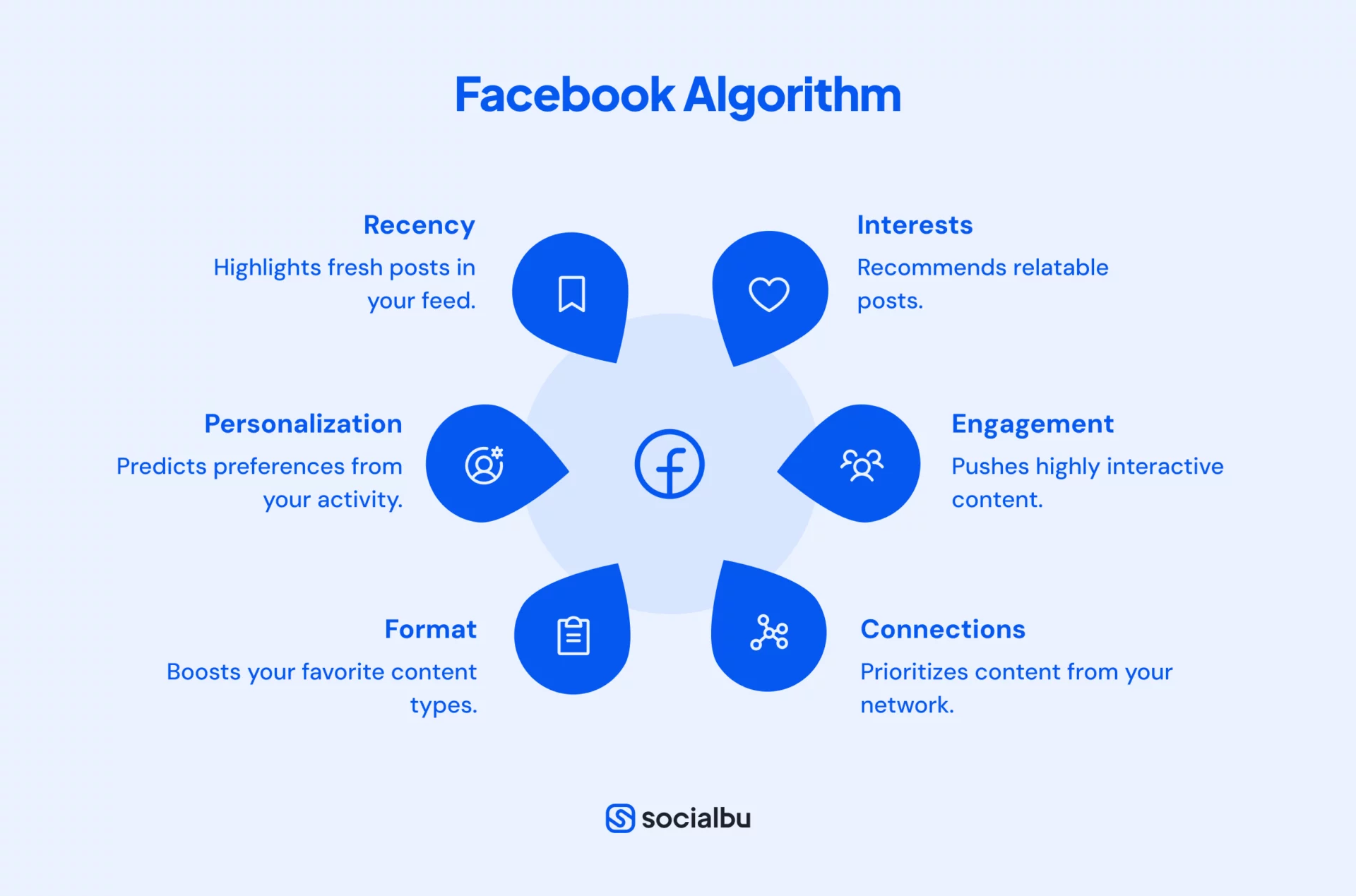
- Timing: Facebook’s algorithm prioritizes timing as a key signal for ranking content. Recent posts are more likely to appear higher in a user’s feed.
- Demographics: User demographics, such as location, language, and gender, help predict content preferences and ensure users see posts relevant to their background and interests.
- Account Credibility: The algorithm favors accounts with established credibility, a strong following, and a history of engaging content. This helps prioritize content from trusted sources.
- Content-Type: Facebook’s algorithm prioritizes posts that users engage with most, such as text updates, photos, videos, or links.
- Relevance: Posts with similar keywords or hashtags are recommended to users with shared interests, creating a more personalized and engaging experience.
- Engagement Levels: High engagement, including comments, shares, and likes, indicates quality content. Since Facebook emphasizes meaningful interactions, it ranks highly engaging content more prominently.
- Facebook Connections: Content from accounts users follow is prioritized over content from accounts they don’t follow. This ensures that users see updates from their friends and family.
Facebook’s algorithm combines these signals to assign each post a relevancy score. This score predicts how likely a user is to interact with a post and determines its position in the user’s feed.
Predictions for 2025
- AI-powered Personalization: Expect even more personalized content recommendations. AI algorithms will significantly help understand user preferences and suggest relevant content, even from accounts they don’t follow.
- Community Focus: Facebook Groups will continue to be a key area of focus, as the algorithm prioritizes content that fosters community engagement and builds relationships.
Instagram Algorithm
Instagram’s algorithm is one of the most diverse among social media platforms. It’s designed to cater to different content formats and user behaviors across various app sections, including the Feed, Stories, Explore, and Reels. Each section utilizes algorithms, classifiers, and processes to tailor content recommendations based on user behavior.
Instagram Feed
The Instagram Feed presents a mix of content from accounts a user follows, similar profiles they might enjoy, and personalized ads. Posts in the feed are ranked based on several signals:
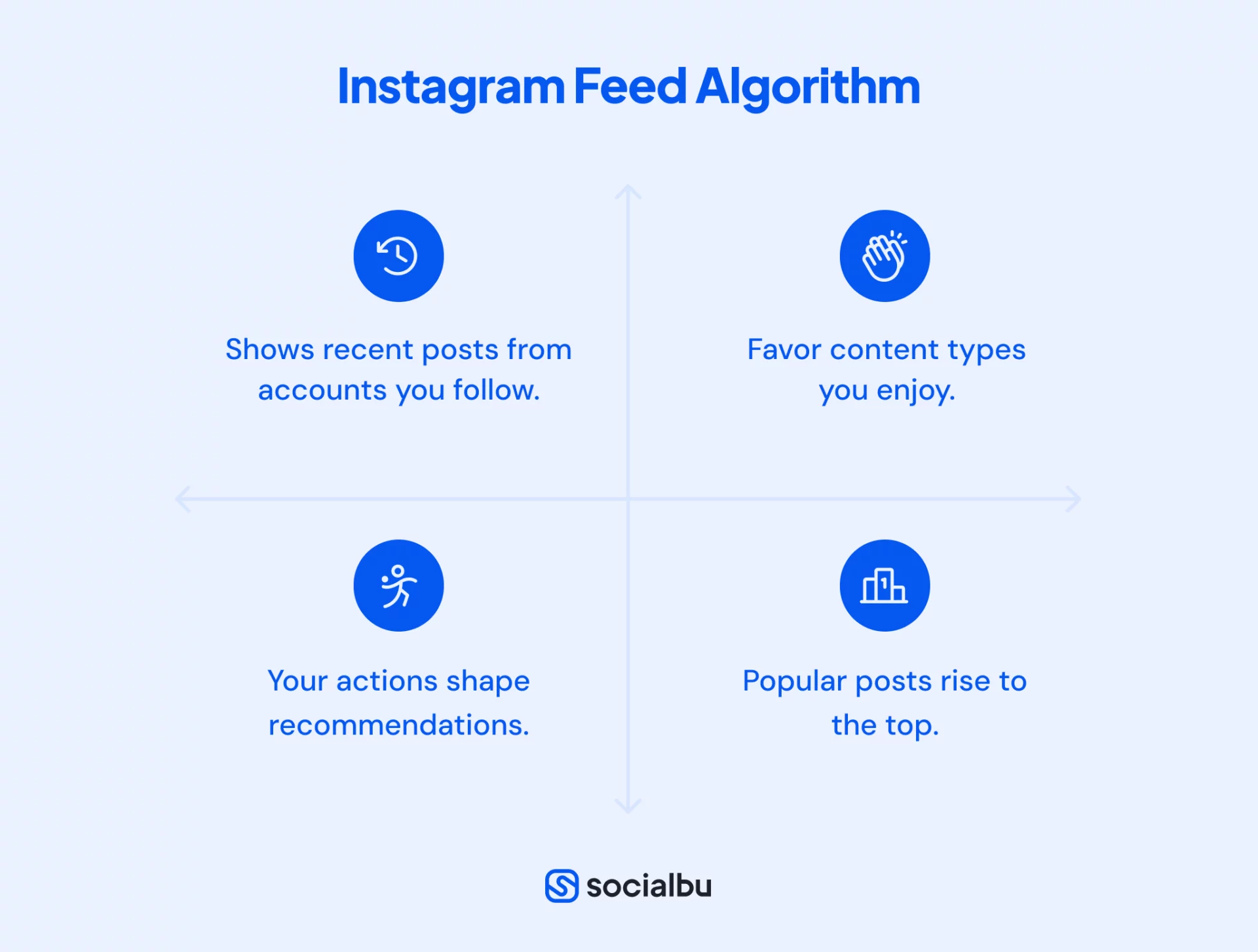
- Post Recency: Recent posts from followed accounts are prioritized, appearing before older ones.
- People You Follow: Posts from accounts a user follows appear organically on their feed, ensuring they see updates from people they’ve chosen to connect with.
- User Activity: Posts a user has liked, shared, saved, or commented on to convey their content preferences, influencing future recommendations.
- Content Type: Users who prefer photos will see more images, while those who engage with videos will see more content.
- Post Information: Posts with many likes, shares, comments, and saves signal relevance to users with similar interests or locations.
- Interaction History: A user’s interaction history with an account’s posts and the frequency of those interactions influence the appearance of that account’s content in their feed.
Instagram Stories
Stories are a feature that allows users to post photos or videos that disappear after 24 hours. The ranking factors for Stories are similar to those of the Instagram Feed, with an emphasis on engagement signals:
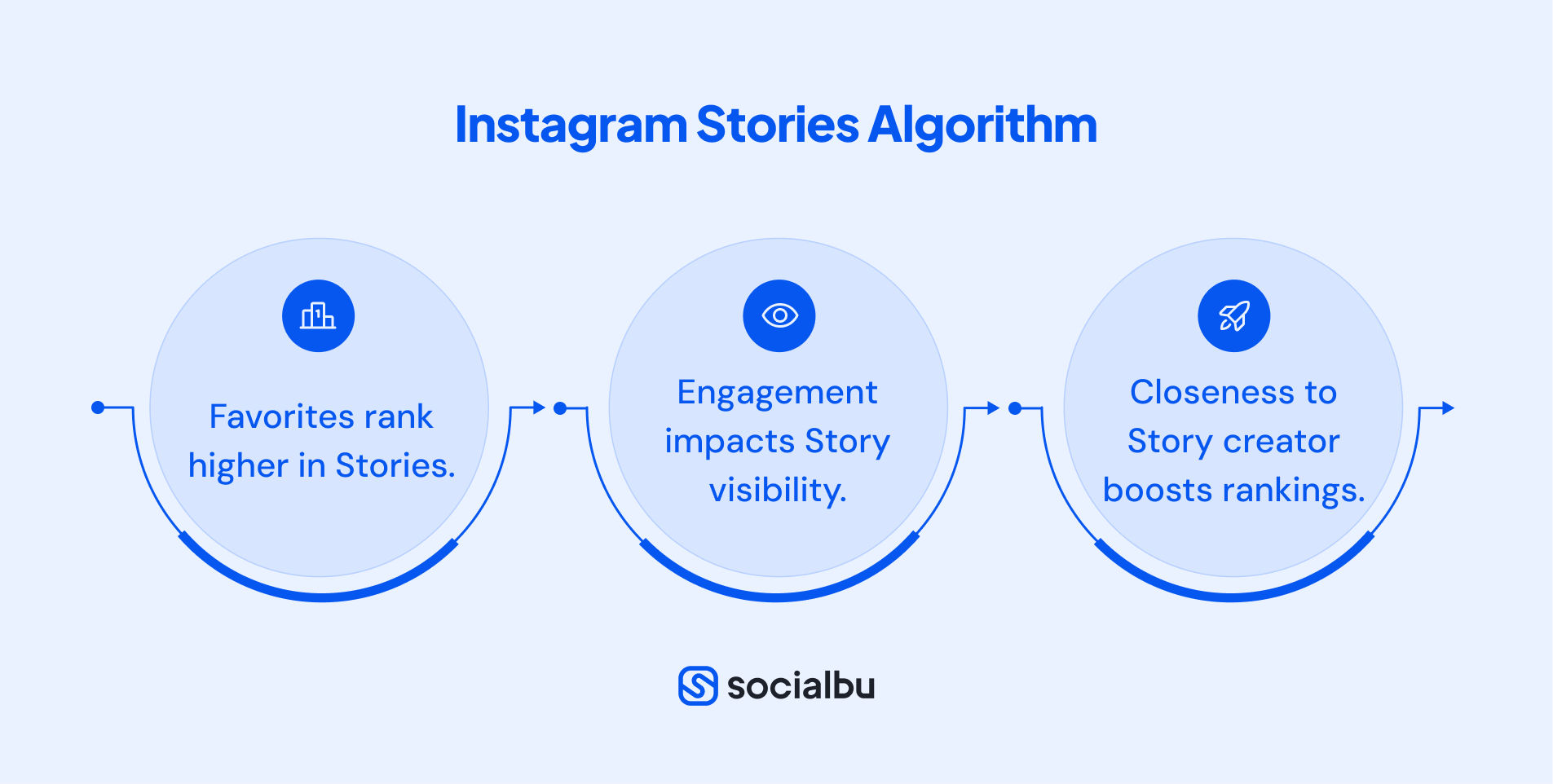
- Viewing History: Frequently viewing an account’s Stories will result in its prioritization in the user’s Stories.
- Engagement History: Liking or responding to Stories is an engagement metric that impacts Story rankings.
- Closeness: The algorithm considers the relationship between the user and the Story’s creator, including mutual follows, shared locations, and direct message interactions.
Instagram Explore
The Explore page simplifies the discovery of new content without requiring an active search. The grid comprises content recommendations from accounts that users don’t follow but that Instagram believes they might enjoy. Signals considered include:
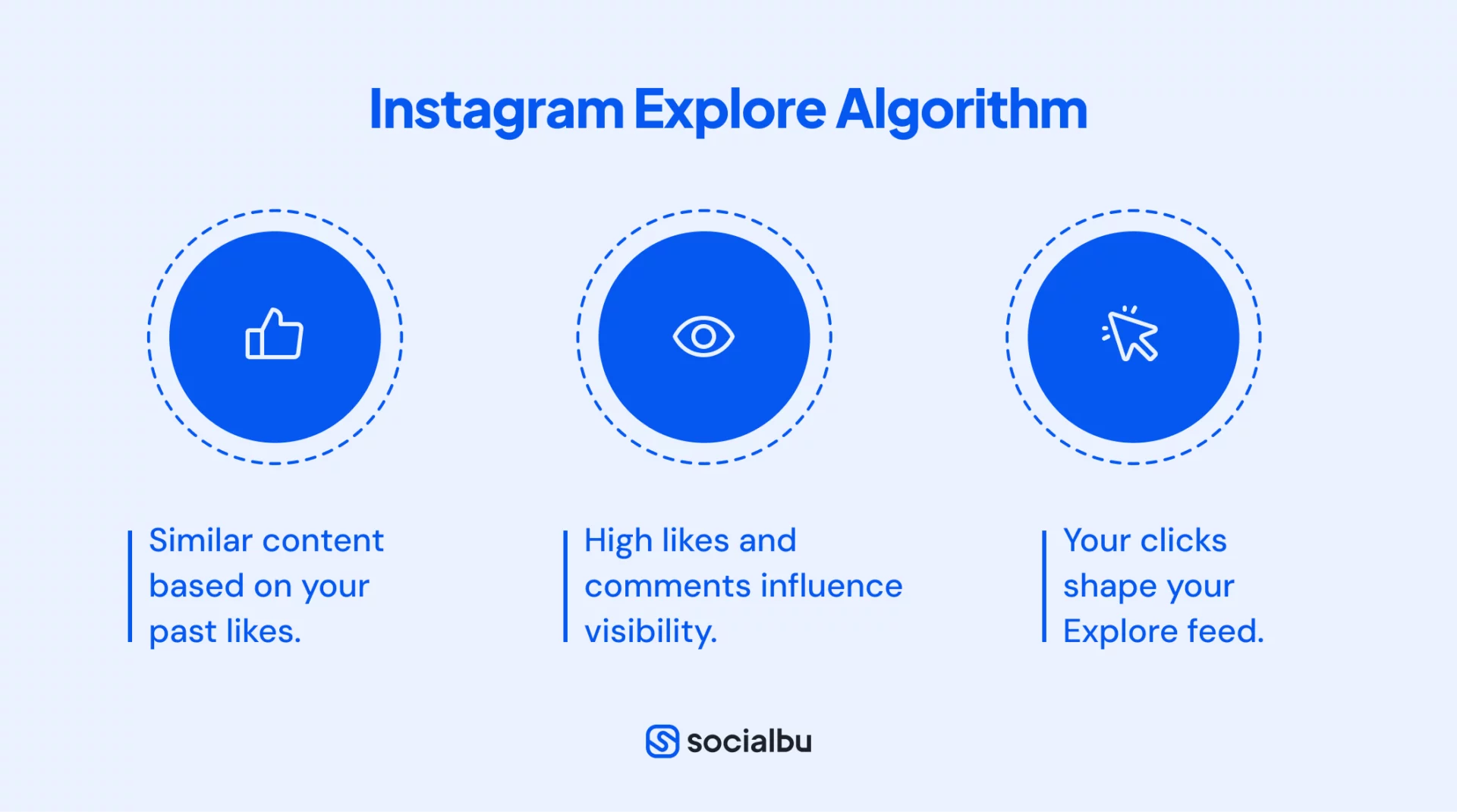
- User’s Past Interaction: Content is ranked based on previous engagements with posts, suggesting similar content the user might find interesting.
- Post Popularity: The number of likes, comments, shares, and saves influences visibility, as popular posts are more likely to be recommended.
- User’s Explore Activity: The history of a user’s interaction on the Explore page, including liked posts and similar content, shapes future recommendations.
- Account Information: The frequency with which you have interacted with an account in the past few weeks influences the likelihood of seeing content from that account in Explore.
Instagram Reels
Reels are short-form videos designed for users to explore new content from accounts they don’t follow, similar to the Explore page. Key signals for Reel content include:
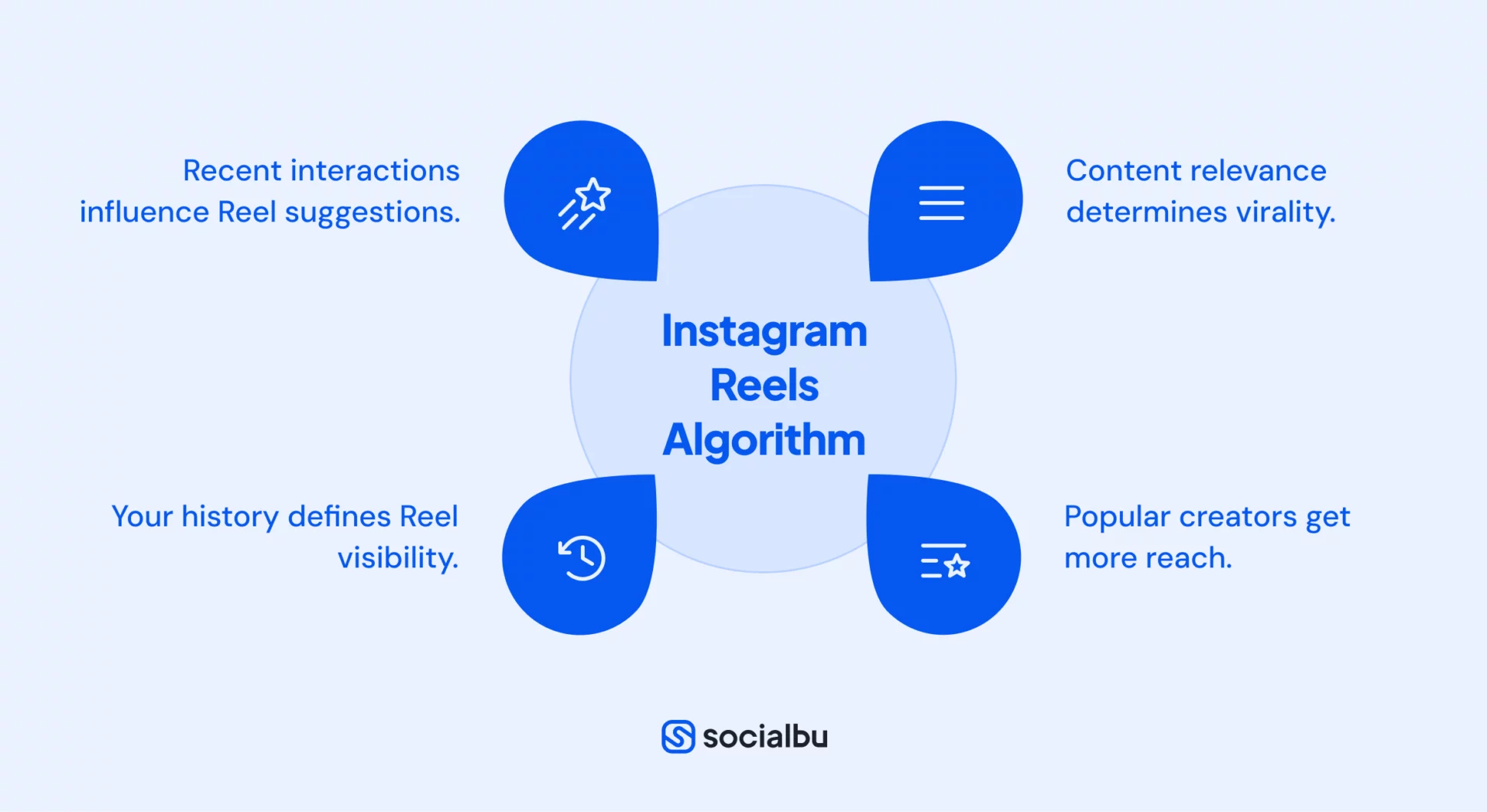
- User’s Activity: Recent interactions with Reels, such as likes, saves, shares, comments, and overall engagement, influence recommendations.
- Interaction History: The user’s interaction history with accounts, even if they don’t follow them, plays a role in Reel recommendations.
- Relevance: The content’s relevance is determined by popularity signals like likes, saves, and comments.
- Account Information: An account’s popularity, including follower count and engagement level, informs content recommendation.
Predictions for 2025
- Short-Form Video Dominance: Reels will remain a significant focus, as short-form video content is highly engaging and easily consumable.
- AI-Driven Recommendations: AI algorithms will likely play an even bigger role in personalizing content recommendations across all app sections.
TikTok Algorithm
TikTok’s algorithm is a recommendation system that curates each user’s “For You” feed. This feed is highly personalized and aims to show users content they are likely to enjoy based on various signals:
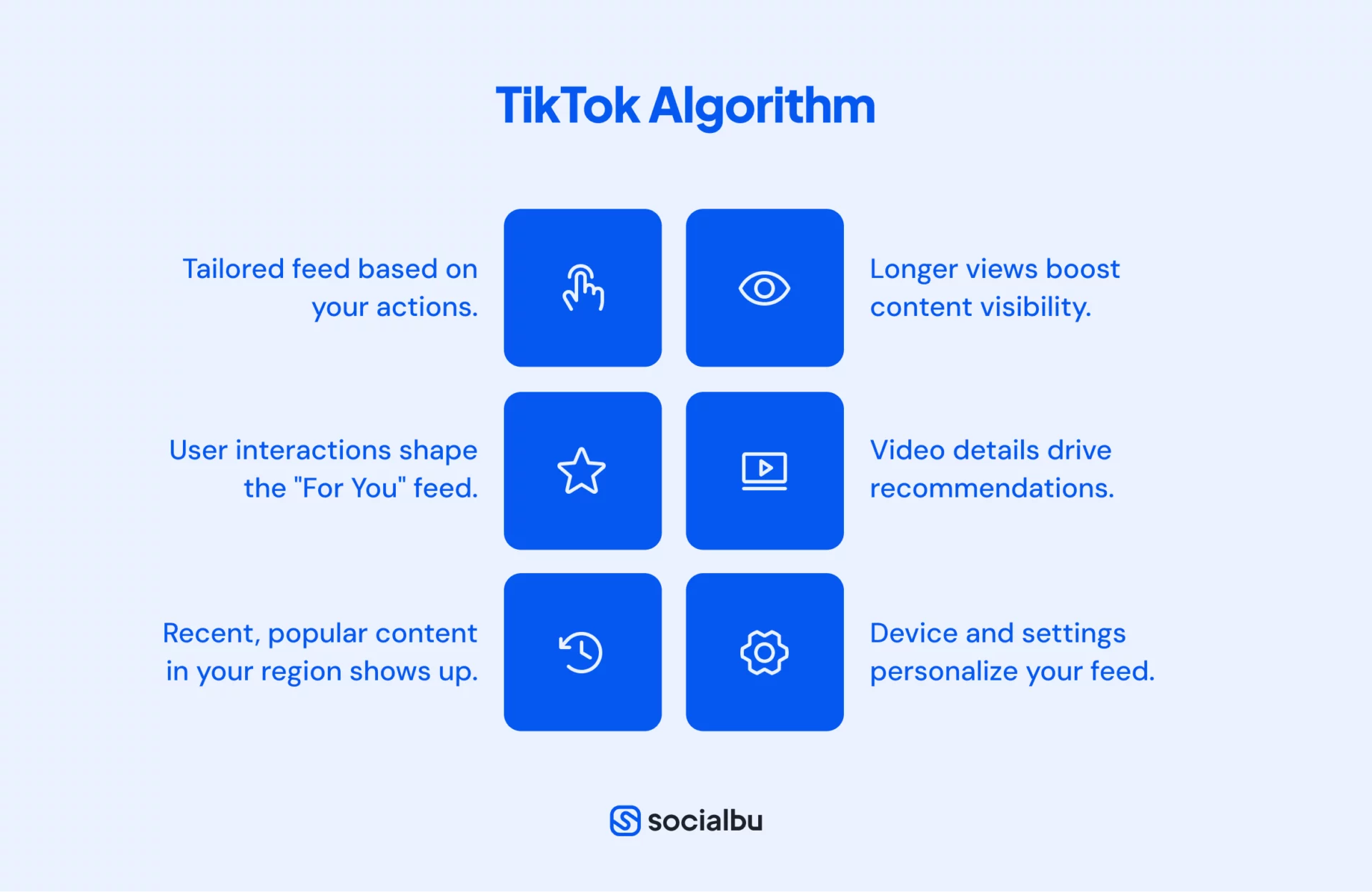
- User Interactions: Your likes, views, shares, comments, searches, and interactions with accounts all shape the “For You” feed.
- Location: Recent and popular content in your region impacts your feed, ensuring you see trending videos from your area.
- Video Details: TikTok uses video quality, captions, sounds, and hashtags to recommend content.
- Device and Account Settings: This includes language, device type, and country settings, which help personalize the content.
- Watch Time: The number of replays and completed videos influences the feed, as videos with high watch times are deemed more engaging.
Predictions for 2025
- Continued Personalization: AI will refine its ability to predict user preferences and deliver engaging content, making the “For You” feed even more personalized.
- Rise of Niche Communities: TikTok’s algorithm will likely improve, connecting users with shared interests and creating more niche communities.
LinkedIn Algorithm
LinkedIn’s social media algorithm is geared towards professional networking and career advancement. Here’s what you need to know:
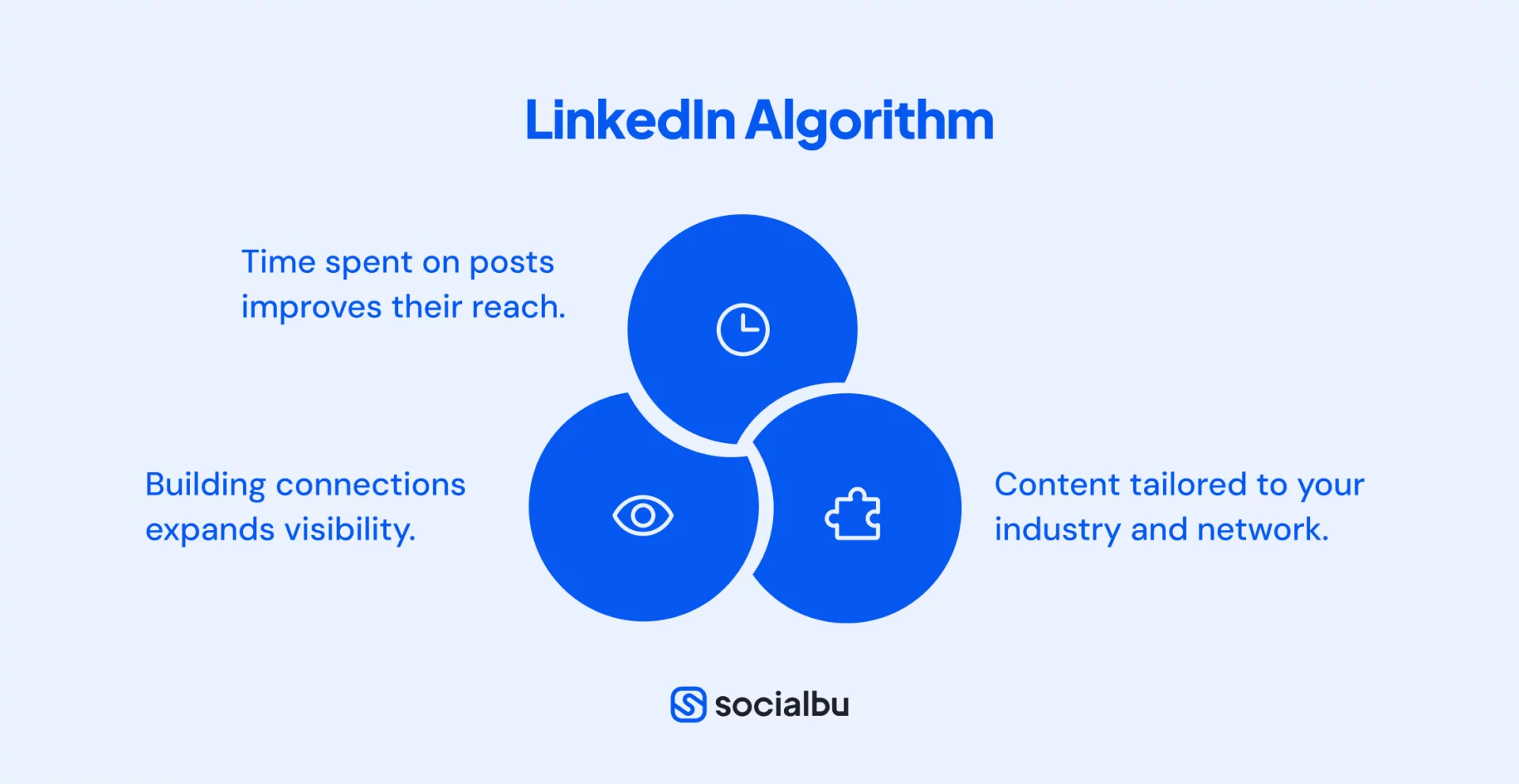
- Content Relevance: The algorithm prioritizes content relevant to your industry, connections, and interests.
- Engagement Signals: Likes, comments, and shares are necessary, but LinkedIn also values “dwell time,” which is how long users spend reading your posts.
- Building Your Network: Connecting with people in your field and engaging with their content can boost your visibility.
Predictions for 2025
- Collaborative Engagement: Use LinkedIn to emphasize collaborative features like group discussions and live events to foster professional connections.
- Focus on Thought Leadership: It will become increasingly important to share insightful content and establish yourself as a thought leader in your industry.
Pinterest Algorithm
Pinterest’s algorithm focuses on visual discovery and inspiration. Here’s how it works:
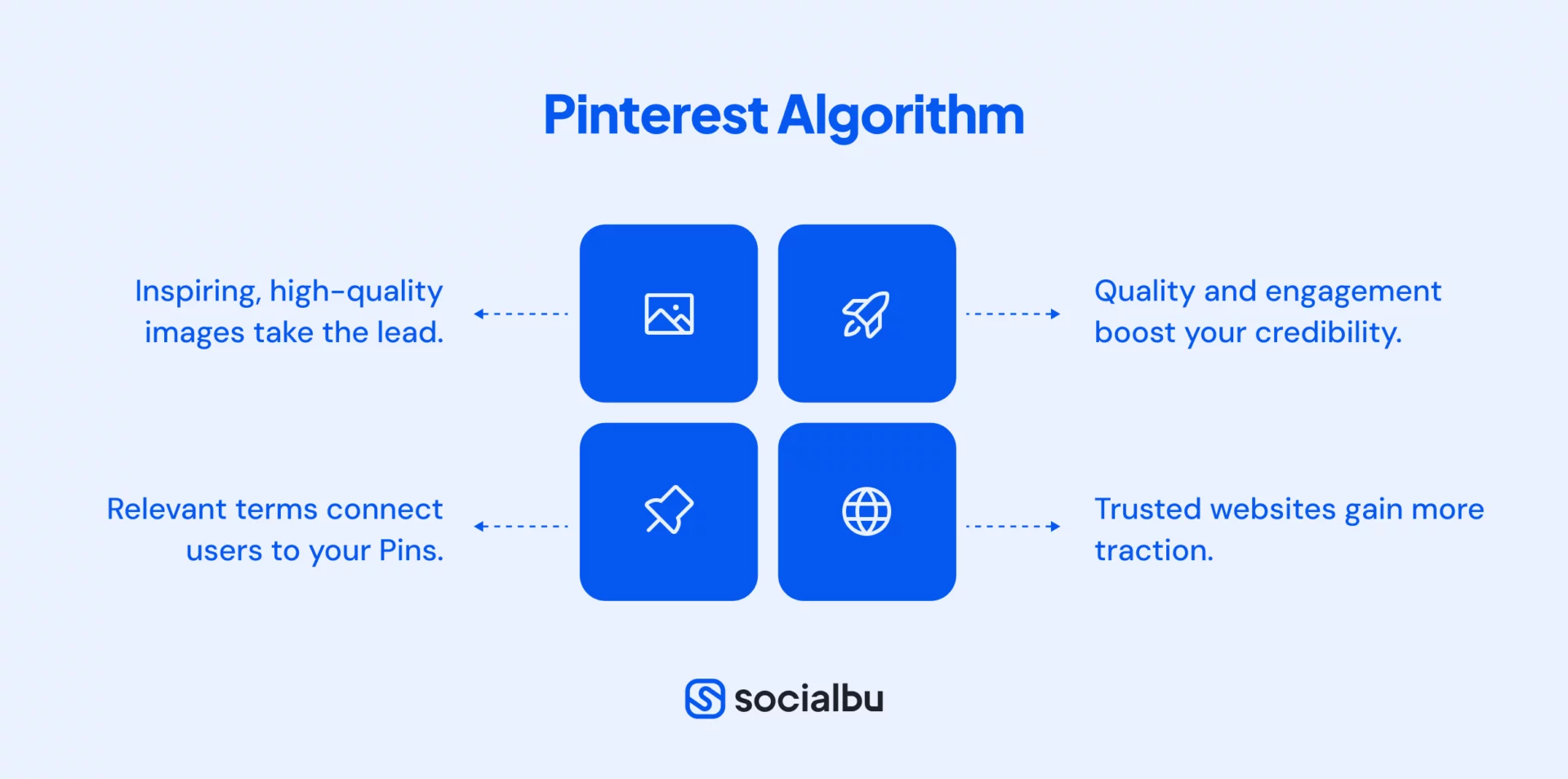
- Keyword Relevance: Pinterest uses keywords in your Pin titles, descriptions, and boards to determine relevance to user searches.
- Image Quality: High-quality, visually appealing images are favored by the algorithm.
- Pinner Quality: Pinterest considers the quality and engagement of your overall profile, including the number of followers and boards.
- Domain Quality: The algorithm favors Pins from reputable websites with high-quality content.
Predictions for 2025
- Increased Focus on Video Pins: Pinterest is expected to prioritize video Pins as a more engaging format.
- AI-Powered Personalization: AI algorithms will significantly personalize recommendations and search results based on user interests and behavior.
Twitter (X) Algorithm
Twitter, now rebranded as X, has an algorithm that aims to show users the most relevant and engaging tweets. Here are some of the key factors:
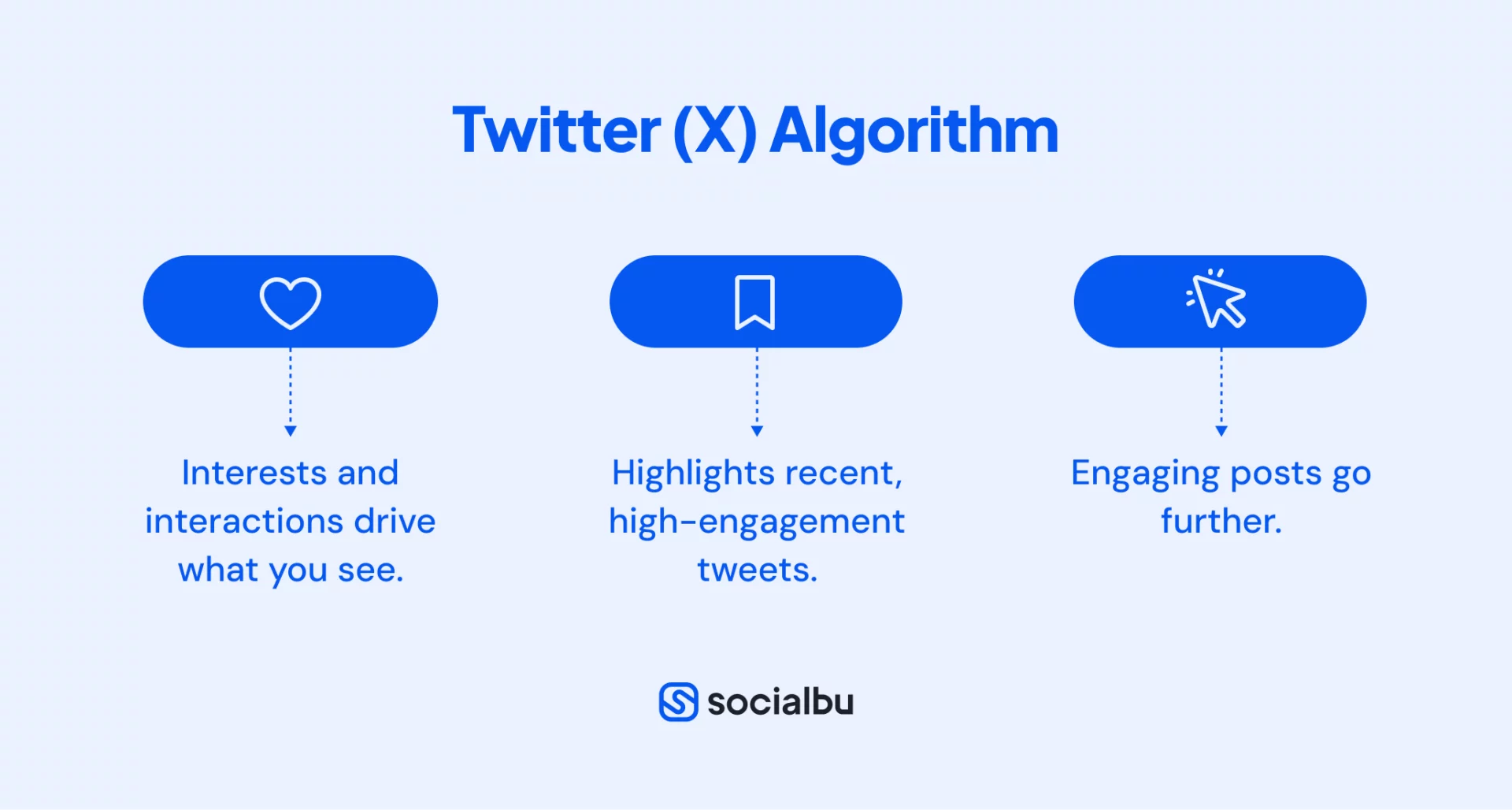
- Relevance: The algorithm considers your interests, who you follow, and what you interact with to show you relevant tweets.
- Recency: Recent tweets are prominent, especially in trending topics and “What’s Happening.”
- Engagement: Tweets with high engagement (likes, retweets, replies) are more likely to be shown to a broader audience.
Predictions for 2025
- Enhanced Curation: X’s algorithm will likely incorporate more user interest predictions and better curation based on topics users follow, not just accounts.
- Focus on Communities: Expect X to continue developing features that foster community building and encourage discussions around shared interests.
YouTube Algorithm
YouTube’s algorithm is designed to keep users watching and engaged with videos. Here are some of the key factors:
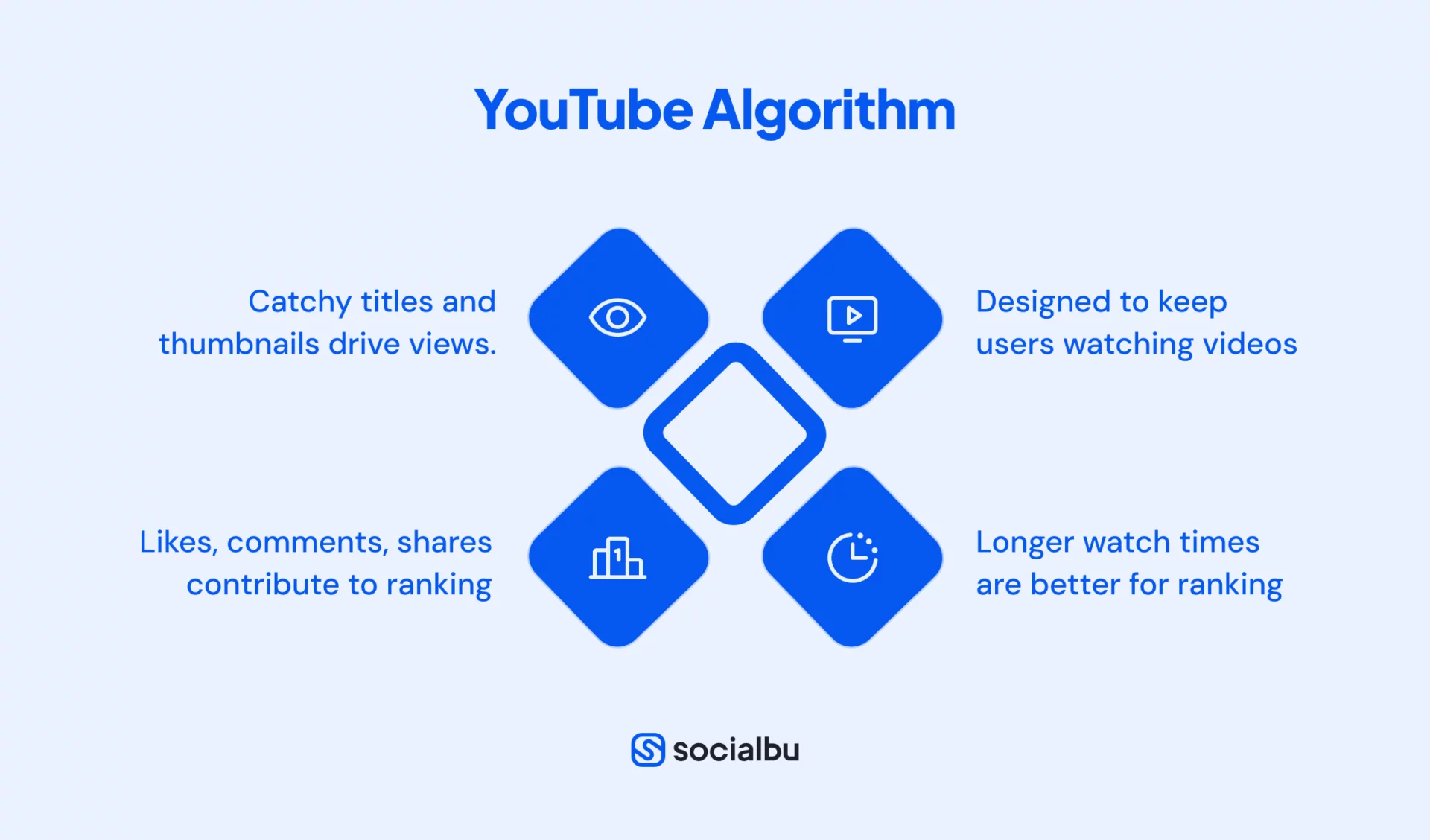
- Watch Time: The longer users watch your videos, the better. Aim for high audience retention.
- Click-Through Rate: An enticing title and thumbnail are crucial to attract clicks and improve your video’s visibility.
- Engagement Signals: Likes, comments, and shares contribute to your video’s ranking.
Predictions for 2025
- Short-Form Video Integration: As short-form video continues to gain popularity, YouTube Shorts will likely become more integrated with the leading platform.
- Personalized Recommendations: AI algorithms will play a role in suggesting videos based on user preferences and watch history.
Threads Algorithm
Threads, Instagram’s text-based app, is still relatively new, but here’s what we know about its algorithm:
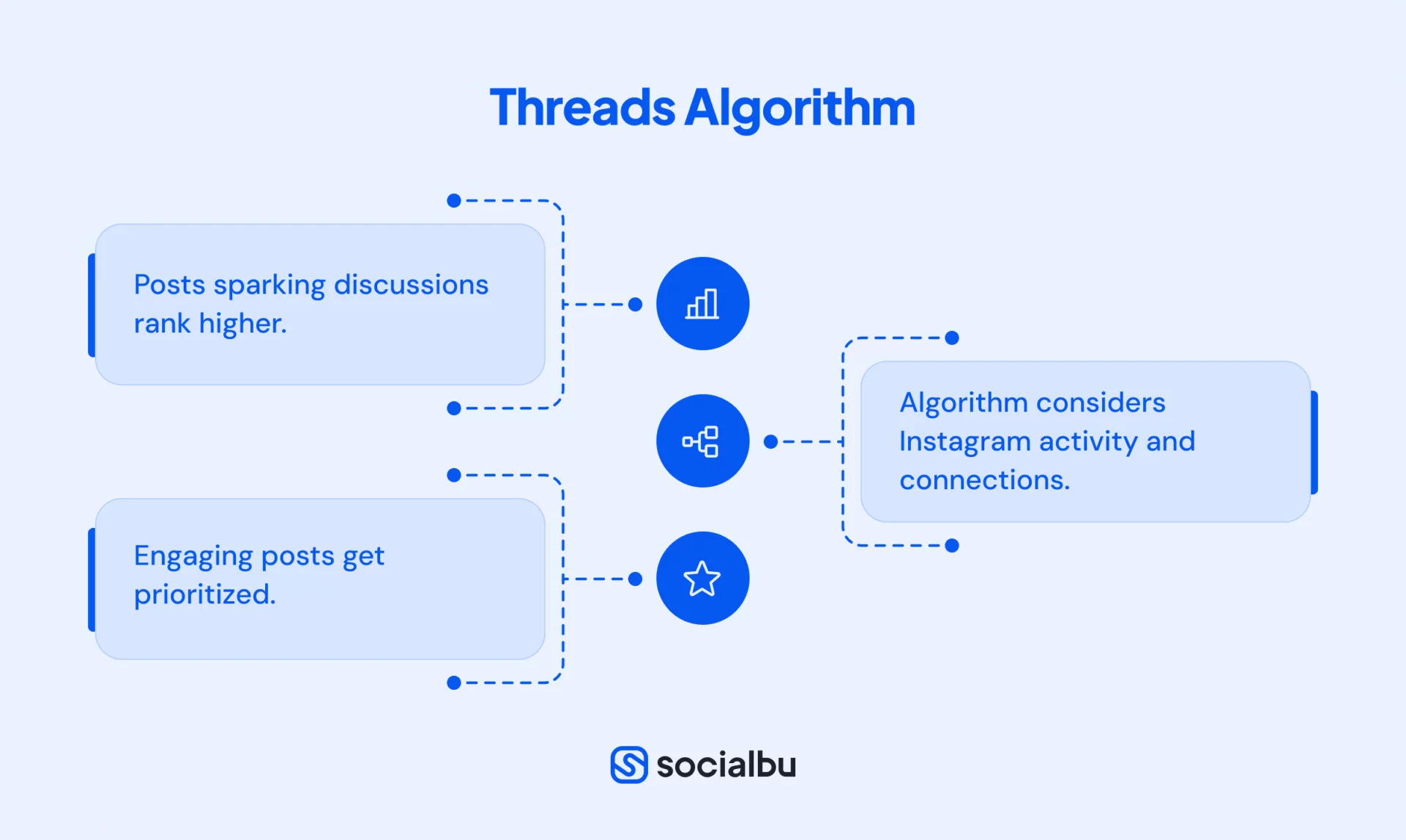
- Close Ties to Instagram: The algorithm likely considers your Instagram activity and connections.
- Prioritizing Engagement: Early indicators suggest that Threads prioritizes posts with high engagement (replies, reposts, quotes).
- Focus on Conversations: Threads are designed for conversations, so expect the algorithm to favor posts that spark discussions and interactions.
Predictions for 2025
- Integration with Instagram: Threads may become more deeply interconnected with Instagram, allowing for seamless sharing and cross-platform engagement.
- Evolving Ranking Signals: As Threads matures, expect the algorithm to develop and incorporate new ranking signals.
How Marketers Can Adapt to the 2025 Social Media Algorithm?
Now you know how social media algorithms work for each platform and the changes that will be super important in 2025. But here’s the critical next step: It’s time to turn that knowledge into action. In 2025, social networks’ algorithms will be even more advanced. This will make the classic “post and pray” method an old approach.
Posting content and hoping to increase your following and engagement will not work now. Success requires a proactive, strategic approach that combines creativity, data analysis, and a deep knowledge of algorithms.
Ready to stop guessing and start succeeding? Here’s how you can adapt your strategy and thrive in the AI-powered social media landscape:
1. Understand Your Audience and Their Intent
Before creating content, ask yourself, “What does my audience want to see?”
Social media algorithms are all about delivering relevant content to users. Understanding your audience’s interests, behaviors, and the intent behind their interactions is crucial for creating resonating content.
2. Embrace AI and Automation
AI algorithms are becoming increasingly prevalent in social media. Leverage AI-powered tools to analyze data, personalize content, and automate tasks. This will free up your time to focus on strategy and creativity.
3. Prioritize Engagement and Build Community
Algorithms love engagement. Focus on creating content that sparks conversations, encourages interaction, and fosters a sense of community. To engage your audience, ask questions, run polls, and respond to comments.
4. Create High Quality and Diverse Content
Algorithms prioritize quality over quantity. Create valuable, informative, and entertaining content. To keep your audience engaged, experiment with different formats, such as videos, live streams, and interactive content.
5. Stay Informed and Adapt
The social media landscape is constantly evolving. Stay up-to-date on the latest algorithm changes and trends. Be flexible and willing to adapt your strategy as needed.
By following these tips, you can ensure that your content reaches the right audience and achieves your marketing goals in the ever-changing era of social media algorithms.
How SocialBu Helps You Master Social Media Algorithms?
Staying ahead of the trends with ever-changing social media algorithms can feel like a full-time job. But don’t worry, SocialBu is here to help.
Our platform offers tools designed to optimize your social media strategy and maximize your reach across all the major platforms. Our platform has tools to help you understand and beat these algorithms.
Content Curation Tools
SocialBu’s AI-powered content curation tool helps you create engaging content that resonates with your target audience. It lets you quickly find trending topics related to your niche or industry and post the content your audience wants to see.
Platform-Specific Analytics
Gain in-depth insights into how your content performs on each platform. SocialBu provides platform-specific analytics that goes beyond metrics like likes and followers. Understand what truly drives engagement and adjust your strategy accordingly.
AI-Powered Scheduling and Automation
Optimize your posting schedule with SocialBu’s AI-powered scheduling tools. Automate your social media tasks, from scheduling posts to monitoring mentions, so you can focus on what matters most: creating amazing content.
Algorithm-Specific Strategies
SocialBu helps you tailor your approach to each platform’s unique algorithm. Whether you’re optimizing for Facebook’s emphasis on meaningful interactions or TikTok’s focus on watch time, SocialBu provides the tools and insights you need to succeed.
SocialBu empowers you to:
- Track engagement across all platforms.
- Receive AI-driven content recommendations tailored to your audience.
- Use audience insights to understand your followers’ behaviors better, improving your content strategy over time.
Final Words
Understanding social media algorithms will be essential to staying relevant in 2025. SocialBu offers the tools, insights, and automation needed to stay ahead of the curve.
By adapting your content strategy, focusing on engagement signals, and adopting AI-powered tools, you can maximize your visibility and success across all major platforms.
By aligning their content with evolving algorithms, marketers can reach their audiences in new, innovative ways. Try to keep ahead of the trends, embrace change, and let tools like SocialBu help you drive your success.
From Facebook’s meaningful interactions to TikTok’s “For You” page, SocialBu helps you personalize your content and automate your posting for maximum impact.
FAQs
Q: How Are Facebook, Instagram, YouTube, and TikTok Feeds Tailored to the User?
Feeds on these platforms are driven by AI algorithms that track user behavior. These algorithms prioritize content based on past interactions, interests, and engagement. The more you engage, the more personalized your feed becomes, whether through likes, shares, or time spent.
Q: What’s the Purpose of a Social Media Algorithm?
A social media algorithm filters and delivers content most likely to engage a specific user, ensuring the best possible experience while keeping them hooked. It’s about matching content with user interest, which means less scrolling and more connecting.
Q: How Does the Algorithm Work on Social Media?
Algorithms analyze user interactions, such as likes, comments, shares, and time spent on content, to determine what is shown next. They prioritize content that sparks engagement and reflects the user’s preferences and behavior, making feeds feel hyper-relevant.
